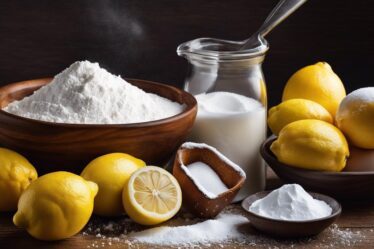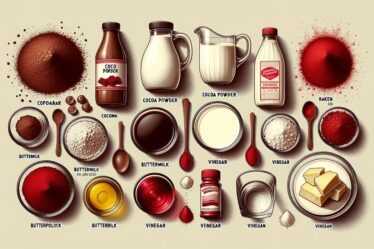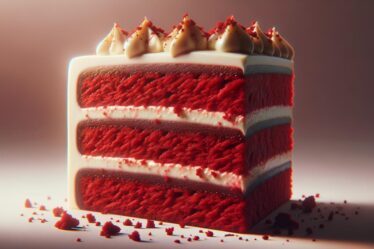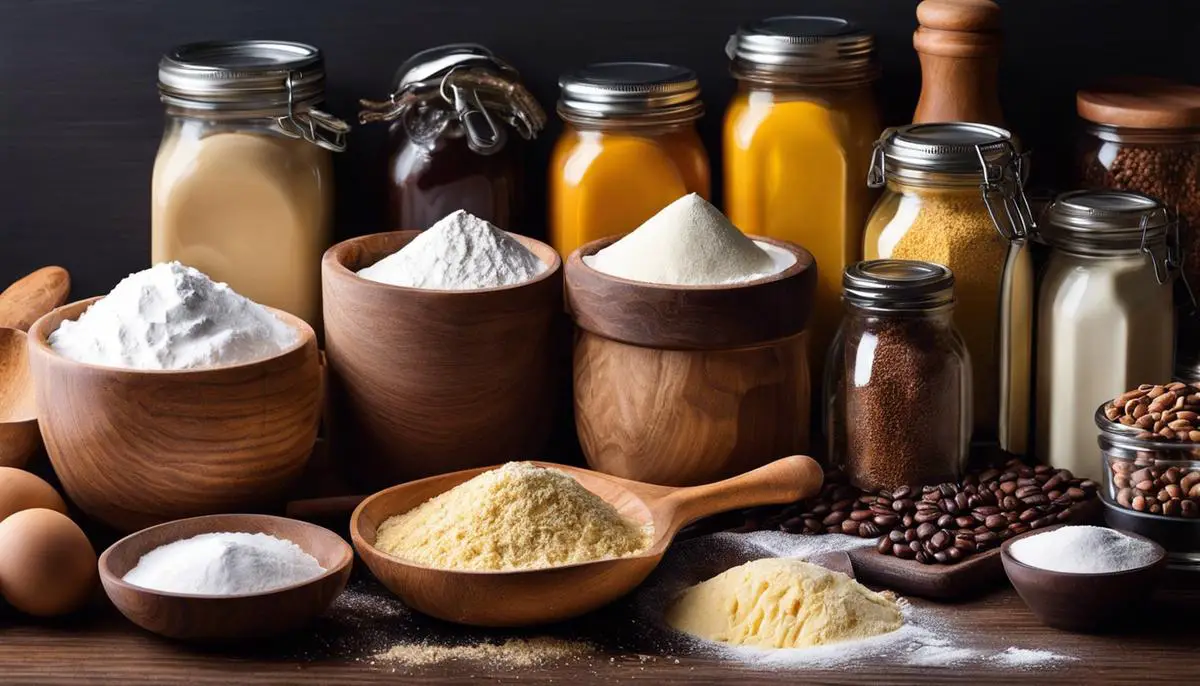
Embarking on a culinary adventure, transforming simple ingredients into a delectable delight, is a rewarding journey for the palate and soul. Today, we delve into the art of creating a perfect coffee cake, a harmonious blend of rich coffee flavor wrapped in a tender cake crumb. Our endeavor begins with the careful selection and gathering of fresh ingredients—flour, sugar, coffee, butter, and baking powder—carefully measured and ready to play their roles. But our craft extends beyond mere ingredients; it’s a meticulous ballet of baking techniques. Together, we’ll explore the importance of creaming butter and sugar to ethereal lightness, the gentle incorporation of flour for structure, and mastering the oven’s alchemy to coax forth a cake that sings with moisture and flavor.
Gathering Ingredients
Ah, the classic coffee cake – that timeless companion to our morning cup of joe, the centerpiece of brunch tables, and the sweet treat that has a special place in the heart of every baker who adores the simple joys of comfort food. For those with a penchant for all things baked and beautiful, fear not! Crafting the quintessential coffee cake is a culinary escapade that will tantalize the taste buds and elevate your baking repertoire to new, delectable heights.
To embark on this gastronomic quest, let us arm ourselves with the proper ammunition – ingredients that are the cornerstone of any classic coffee cake worth its crumbly topping.
Firstly, the foundation of our cake requires the usual suspects: all-purpose flour for structure, granulated sugar to sweeten the deal, and a pinch of salt to balance the flavors. It’s not a cake without a leavening agent, so baking powder (and sometimes a smidgen of baking soda) is essential to achieve the light yet moist crumb one expects from a top-notch coffee cake.
Now, the baton is passed on to the fats – unsalted butter is the hero here, ensuring richness and a tender mouthfeel. For an extra dimension of indulgence, eggs join the mix. They contribute to the texture and richness that elevate the cake from good to ‘first bite and I’m in heaven.’
Onto the liquids – a dash of pure vanilla extract infuses the batter with a fragrant depth of flavor. The real game-changer, however, is sour cream. This tangy delight is the secret ingredient that bestows the cake with moisture and a subtle complexity that will leave your guests pondering your culinary wizardry.
But what’s a coffee cake without its signature crowning glory? The streusel topping – a delightful mosaic of brown sugar, cinnamon, and butter, sometimes with chopped nuts for an added crunch – creates a contrast in textures that is sure to elicit a symphony of satisfied ‘mmms’ and ‘ahhs.’
For those who delight in an extra kiss of sweetness, a simple vanilla glaze drizzled with a laissez-faire attitude can be the perfect final flourish.
Remember, a classic coffee cake is not just about the harmony of ingredients, but also about the joy in creating it. Each step, from creaming butter and sugar to folding in the flour, is a step closer to the kind of culinary creation that embodies the connective power of food – shared, savored, and utterly scrumptious.
So gather these key ingredients and embark on the baking journey of a lifetime – where the warm, inviting aroma of a perfectly baked coffee cake is only a preheat-button-push away. May your kitchen be filled with joy and your coffee cups forever brim with the perfect pairing to this baked marvel. Happy baking, dear food enthusiasts!
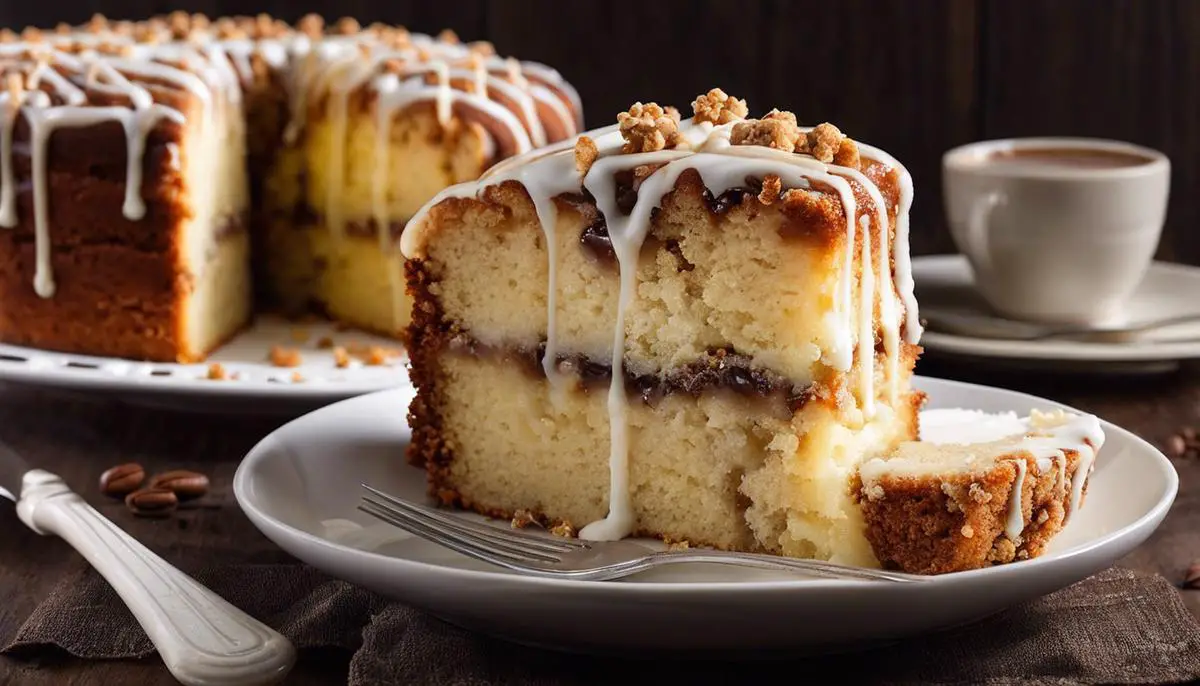
Understanding Baking Techniques
The art and finesse of baking a coffee cake go well beyond merely combining the right ingredients. Though the components already covered lay the foundation for an irresistible treat, the techniques used during preparation are equally pivotal for producing a cake that not only captivates the taste buds but also delights the senses with its texture.
First and foremost, let’s consider the measurement of ingredients, which must be precise. Baking is a chemistry, and each element has its role in the ensemble. Measuring flour by spooning it into the measuring cup and leveling it off ensures that the flour is not compacted, averting the common misstep of a dense, dry cake.
The creaming process where butter and sugar are whipped together until pale and fluffy, is more than a mere step; it’s a transformative moment for your cake. This aerates the batter, creating pockets that will ultimately give the cake its tender crumb. Take the time to do this well – patience here builds the base of your cake’s texture.
When adding eggs, they should be at room temperature and incorporated one at a time. Careful emulsion at this stage leads to a batter that is both uniform and stable, preventing a sad separation that can result in a heavy, greasy cake.
As for the sour cream, its integration is an intimate dance between wet and dry. Alternate between adding portions of flour mixture and the creamy condiment, starting and ending with flour. This ensures a batter that’s not overly worked – because overworking the gluten in flour is the sworn enemy of lightness in a coffee cake. With a gentle touch, fold in the ingredients until just combined to keep the batter lovingly tender.
Next, the distribution of batter into the pan should be done with loving attention. Spread evenly to avoid a lopsided bake that might result in some parts drying out as others struggle to cook through. And let’s not forget the streusel – layering some in the middle as well as crowning the top can introduce a delightful textural juxtaposition that is as exciting as a crunch through fallen leaves.
The importance of oven temperature cannot be overemphasized. Your oven should be preheated to the right degree so that the cake can start cooking immediately, setting its structure. Baking the cake at the correct temperature ensures that it rises consistently and cooks to moist perfection; whereas deviations can lead to a sad fate, with a cracked top, or worse, a sunken center.
One might not think to connect toothpick-testing to texture, but this simple technique is a sentinel against overbaking. Plunge a toothpick into the cake – if it emerges with a few moist crumbs, the bake is perfect. If it comes out wet, give it more time; but if it’s dry, a moment of silence for the moisture that has escaped is in order.
And after pulling the cake out of the oven, restraint is the final technique. Allow the cake to rest in the pan, absorbing all of those glorious flavors and setting into that perfectly balanced texture – moist, yet airy; rich, yet ephemeral.
The road towards the ultimate coffee cake is littered with the importance of technique. Each step, each decision, each careful motion contributes to the ballet of flavors and textures that make this simple cake a symphony of comfort. Remember, baking isn’t just about following the script of a recipe — it’s about the finesse and care you inject into every whisk, fold, and bake.
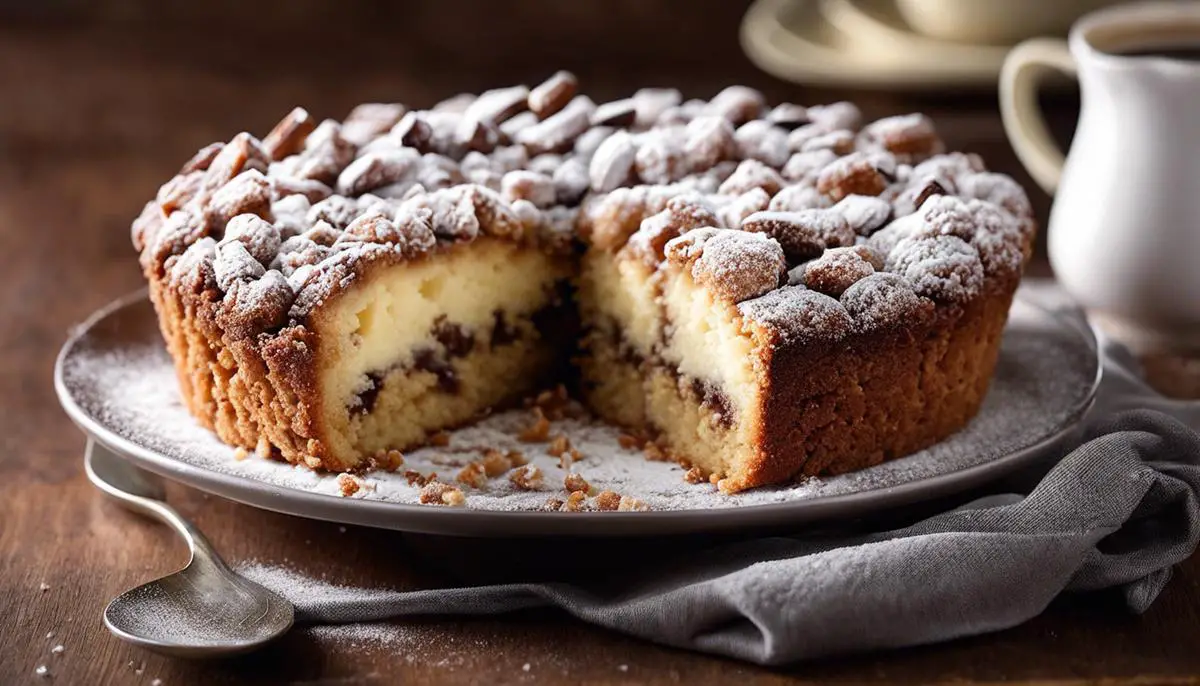
Cake Assembly and Topping
Now that the foundation of coffee cake excellence has been firmly established, it’s time to turn our attention to the subtleties of batter layering and crumb topping perfection – this is where the alchemy of baking transforms basic ingredients into a sumptuous treat that’s much more than the sum of its parts.
For the curious gastronomes who want to intertwine coffee into their cake, here’s how to layer your batter with this aromatic elixir: after you’ve spread the initial layer of your tender cake batter in the greased pan, drizzle a hearty swirl of your favorite coffee concentrate or strong brewed coffee over the first layer. This isn’t just a coffee-inspired gesture; consider the coffee as a character in your flavor storyline – it should be bold and present, creating subtle mocha nuances within your bites.
Now, spoon on another layer of the batter on top of the coffee layer, spreading gently to conceal the liquid treasure below. For those with an adventurous palette, a sprinkle of espresso powder blended with a touch of brown sugar can be added for an extra jolt before adding the final cake layer.
Next, it’s crumb topping time – where textural dreams come to life. Remember that streusel we prepared with an intoxicating mix of brown sugar, cinnamon, and butter? It’s about to play its starring role. Crumble the streusel over the top layer of batter, ensuring it’s sufficiently coated. Some might say “too much of a good thing” – to them, we say “try more streusel.” If nuts were part of your game plan, now is the time to sprinkle them over the streusel for that satisfying crunch.
The oven, already preheated, awaits this masterpiece. Slide the pan into the oven, which should be set to a toasty 350°F (175°C). The heat will work its magic, marrying flavors, creating textures, and transforming the streusel into a crispy crown atop the cake.
Baking times can vary, but hovering around 40-45 minutes is typically where the magic happens. The cake should rise and the top turn a delightful golden brown. Remember the toothpick secret shared earlier? Plant it in the center and if it emerges crumb-free, it’s time to pull the curtain on baking and let the cooling begin.
Allow the cake to cool in its pan on a wire rack, showing patience as it gathers its composure and flavors mature. Only when cooled should it be transported to a serving platter where it can be sliced and celebrated.
This step-by-step ballet of ingredients and techniques results not just in something to satiate the appetite, but a creation that stands as a testament to the shared joy of culinary discovery. Whether it’s a comforting slice to pair with your morning coffee or an impressive dessert to share with friends, the perfectly layered and crumb-topped coffee cake stands as a delicious monument to the connections we forge over food, one slice at a time.
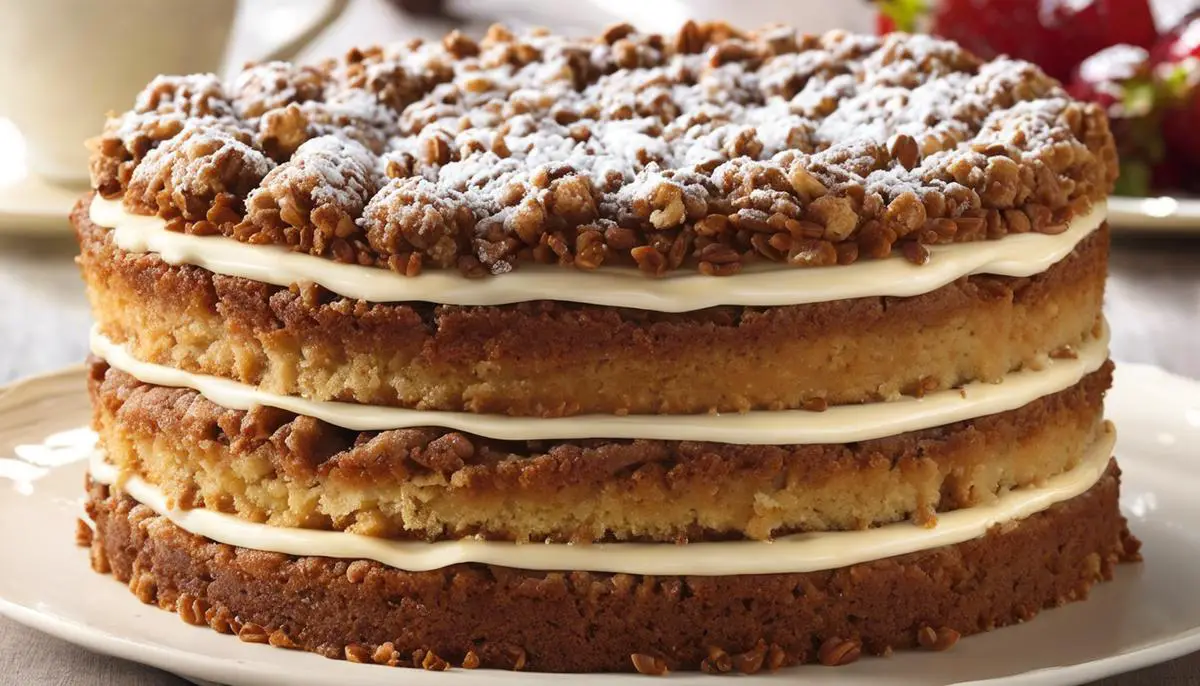
Having traversed the fragrant path of coffee cake creation, we reach the gratifying culmination where the fruits of our labor emerge golden and tempting from the oven. With each slice revealing the swirling dance of cake and coffee, topped by a crown of crumbly sweetness, we take pride in our culinary accomplishment. This is more than just a cake; it’s a testament to the joy found in whisk and bowl, an enchanting symphony of flavors that brings a touch of warmth and comfort to any table. May the skills learned today enrich your baking repertoire, inviting you to revisit and refine the timeless classic that is the coffee coffee cake.

